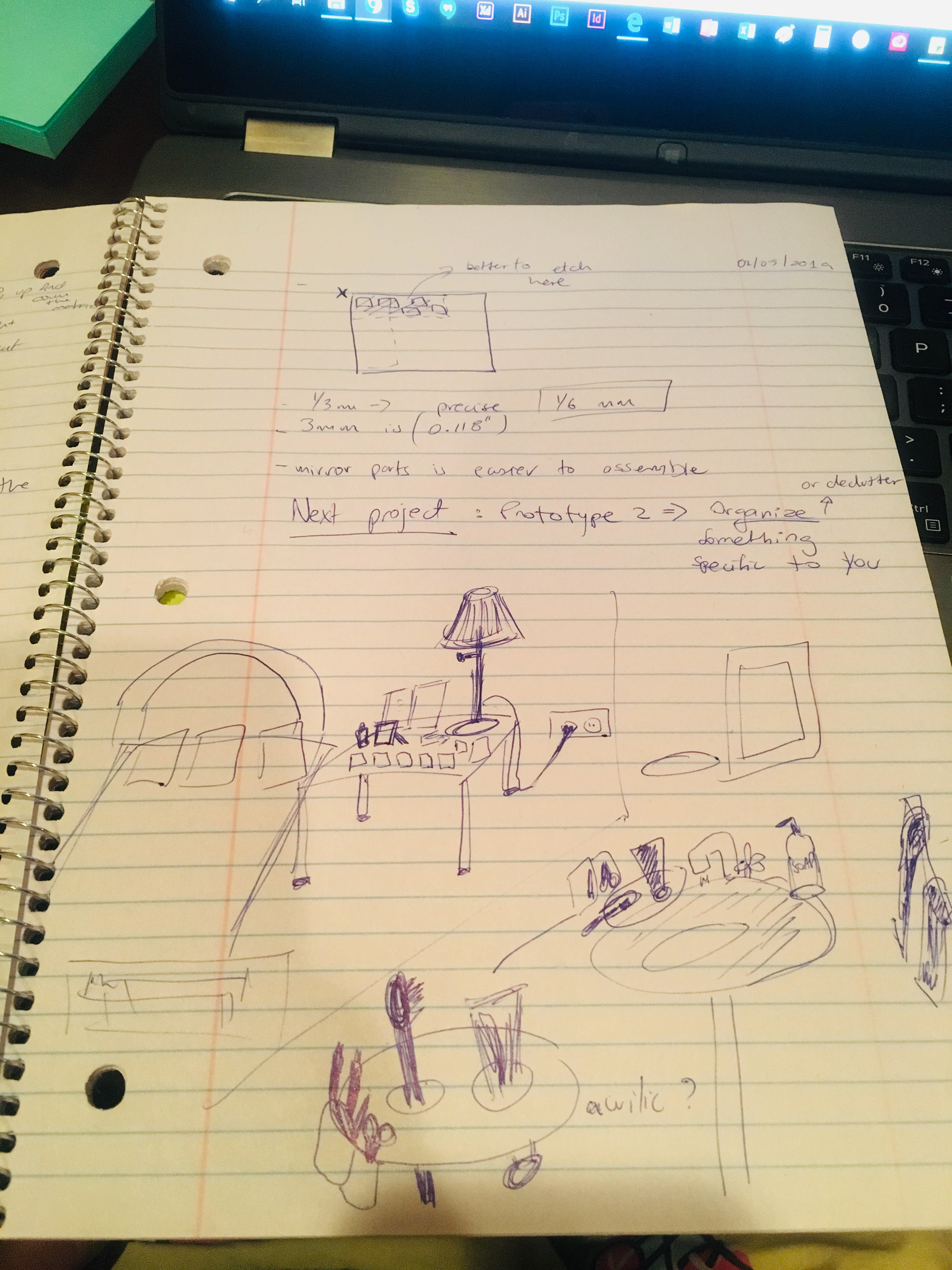The Challenge
I was trying to design 3 adjacent containers to organize some toilet treats that I use everyday. The bigger container is made to allocate toothbrushes and the toothpaste, the middle one to serve as a cosmetic container and the smallest one for my scissors and tweezers. As it is now, I have all this items in different containers and located in different parts in the bathroom, difficulting my reach and making my use of time inefficient. In this case the prototype is low-fidelity. For this particular prototype I was trying to learn about materials and sketches with illustrator in order to have the design ready to laser cut. I want to learn if the containers are appropriate, attractive, and effective for using it in the bathroom. However, it may serve other purposes, for example, when I saw it assembled, it reminded me of a pencil case, so maybe it can be use for that.
The Process
When we first were given the prompt of “think of something that will help you organize something in your everyday life”, I started to think about the most common and routinized activities I do everyday: from sleeping, waking up, going to the bathroom, showering, working out, taking the train, homeworks, and so forth. Then I started to visualize those activities and places in my head and started to see which places were more disorganized. I draw some sketches from my desk and bathroom, and then started to sketch out some ideas: first in my notebook, and then on Ai.
I reviewed the Ai sketch and had some feedback, to then finalizing with a more practical design.


I adapted the original design to make it more practical and suitable for the artifacts and also, to better match the material that I chose to experiment with. I used museum board.
The main issues that I encounter was not knowing how to actually measure the dimensions of real life object to place them in Ai. I did some digging and talk to some friends and the course advisors to better understand this issue. I was able to effectively use the tools as well as some models showed in class to create the model of prototype. The second issue was the new experience of actually going to the makerspace and being able to “convert” my Ai design into a “real thing”. I was engaged talking to the monitor trying to be able to convey the idea and make sure that he was going to cut the right lines and etch the intended parts.
Learnings
It was pretty easy to see how the laser cutting machine works! It's basically just sending a document to print, and I felt so relieved and laugh at myself for having been so nervous. But then, the third issue appeared. Apparently, the monitor didn’t place the “text” box in the right dimension and so instead of etching the phrase “Thankful for a great day”, the machine omit the word “day”. At one point I thought about leaving it like that in order to paint the word and play with other materials, but then I decided to make it write, so I learned how to send only one part of the design to be laser cutted again. Luckily I had extra material.
Another thing that was an issue and that I learned, was that for “finger edge joints” this type of material is not well suited because the joints don’t assemble perfectly, they stay loose. In order to solve this problem, I decided to glue the top and bottom parts.
Future Iterations
I think this technology is amazing and so fast and practical to use, as I mentioned before, it is like printing basically. And I believe that cool things can be designed with the right materials.
From my critiques I appreciated the recognition of "a great design", people liked the boxes and the sizes, the usefulness of it. However, for future iterations I would like to use a different material and put some sort of weight inside the biggest box to help mantain balance.